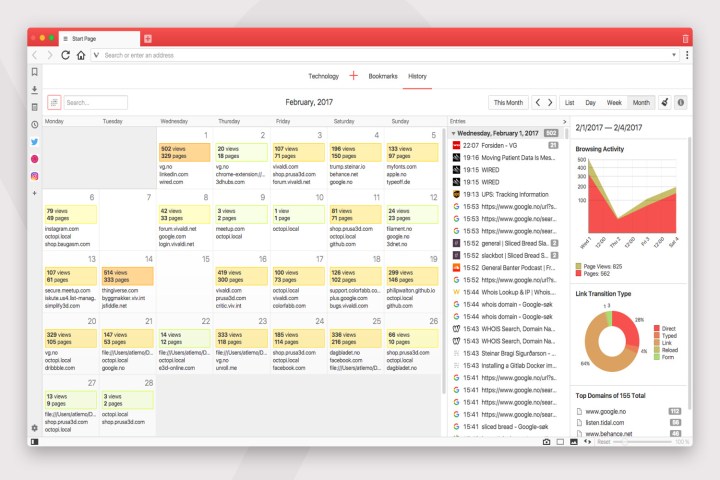
“Instead of having to scroll through hundreds of lines, Vivaldi gives a comprehensive overview of history, presented in a visual way,” Tetzchner said. “This lets our users analyze their online activity and helps them find what they are looking for.”
When Tetzchner abandoned his popular Opera browser to create the new Vivaldi solution, he focused on three principles: A strong focus on community, continuing innovation, and the individual needs of each web surfer. The new History feature focuses on the two latter goals to redefine how the information of past actions are easily relayed to the user.
While that may seem rather creepy given the browser is seemingly collecting data everywhere the user travels, Tetzchner promises that the valued info isn’t sold off to third parties for fast cash. Instead, it’s served up locally to the user for their eyes only. Users will thus see what third parties could collect, enabling them to alter their online behavior.
Vivaldi’s new History feature strives to be a more useful tool than what is provided in competing web browsers. Users can quickly scan through their timeline of visited websites through a calendar-style presentation. It generates detailed statistics consisting of graphs and a color-coded heat map overlay that generates peak online activity points and key browsing trends.
The generated data can make seeking out an old internet address easier, too. Instead of performing a history search based on a possible website name or label, the user can simply scroll through the calendar to the time period when the user accessed the semi-forgotten website. This can be accomplished via a monthly view, a daily view, or by the overall number of views.
The new History feature resides in the browser’s Side Panel, which also provides access to the bookmarks, downloads, and more. The updated Vivaldi browser wasn’t available to download at the time this article was prepared, but based on its description, the History feature’s contents are easily accessible by a simple click in the Side Panel by anyone with access to the base device.
The latest release brings Vivaldi up to version 1.8. It follows the release of Vivaldi 1.7 unleashed in early February sporting new built-in screenshot options. It introduced a new camera icon on the status bar that leads to a pop-up window for taking a screenshot of the entire browser window, or a specific area. The screenshot tool is also accessible through the Tools menu and through mapped keyboard shortcuts.
To grab Vivaldi version 1.8, head here.
Editors' Recommendations
- Chrome is still a RAM killer, but this new feature would be a huge help
- This web browser integrates ChatGPT in a fascinating new way
- The most influential Google Chrome features in its history
- Microsoft Edge’s new Performance Mode could make it a more powerful web browser
- Microsoft Edge’s new Kids Mode is the must-have feature it’s been missing


